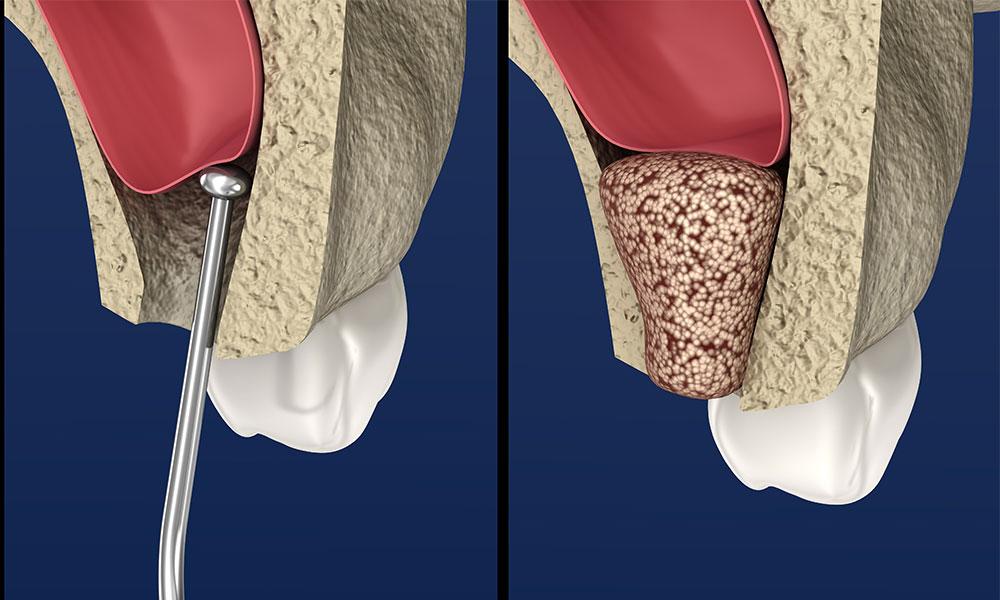Dental bone grafts are procedures commonly performed to restore bone structure and provide a stable foundation for dental implants. However, the dental bone graft cost can vary significantly depending on various factors. Understanding these factors is essential for patients to make informed decisions about their dental treatments. In this article, we will explore the key factors that influence the cost of dental bone grafts.
Complexity Of The Procedure
The complexity of the dental bone graft procedure plays a significant role in determining its cost. Some bone grafts require a simple grafting technique, such as socket preservation, which involves placing grafting material into an extraction socket. These procedures are relatively less expensive. On the other hand, more complex bone grafting procedures, such as sinus lifts or ridge augmentations, involve additional steps and require the expertise of a specialist. Consequently, the complexity of the procedure can impact the overall cost of the dental bone graft.
Type Of Bone Graft Material
Another factor that influences the cost of dental bone grafts is the type of bone graft material used. There are various types of grafting materials available, including autografts (bone harvested from the patient’s own body), allografts (donor bone from another individual), xenografts (bone from animal sources), and synthetic grafts (artificially created materials). The cost of these materials can vary significantly, with autografts being generally more expensive due to the additional surgical procedure required for bone harvesting. The choice of bone graft material depends on several factors, including the patient’s preference, the complexity of the procedure, and the surgeon’s recommendation.
Surgeon’s Experience And Expertise
The experience and expertise of the oral surgeon or periodontist performing the dental bone graft can also impact the cost. Highly skilled and experienced specialists may charge higher fees for their services. Their expertise and reputation in the field often justify the additional cost, as their knowledge and skills can significantly affect the success and long-term outcome of the bone graft procedure. It is crucial to select a qualified professional who has a proven track record in performing successful bone grafts, even if it means incurring slightly higher costs.
Geographic Location
The geographic location of the dental clinic can also affect the cost of dental bone grafts. The cost of living and operating a dental practice can vary significantly from one city to another. Dental clinics located in metropolitan areas or regions with higher costs of living tend to have higher treatment fees. For example, let’s consider the cost of dental bone grafts in Houston. Being a major city, Houston may have a higher average cost compared to smaller towns or rural areas. It is important to consider these regional variations while estimating the cost of dental bone grafts.
Insurance Coverage
Insurance coverage is an essential consideration when it comes to the cost of dental bone grafts. Dental insurance plans often provide coverage for certain dental procedures, including bone grafts. However, the extent of coverage and reimbursement rates can vary among insurance providers and plans. Some plans may cover a significant portion of the cost, while others may only provide partial coverage or none at all. It is crucial to review the insurance policy and discuss the coverage with the dental provider to understand the financial implications and plan accordingly.
Gum Graft Cost
Gum grafting is a common dental procedure performed to treat gum recession and restore gum tissue. The gum graft cost can vary depending on several factors. Here, we will briefly discuss the factors that influence the cost of gum grafts.
The complexity of the Procedure: The complexity of the gum graft procedure plays a significant role in determining its cost. Gum grafts can be performed using different techniques, such as connective tissue grafts, free gingival grafts, or acellular dermal matrix grafts. Complex procedures that require more extensive grafting or involve multiple areas of the mouth may be more costly than simpler procedures.
Extent of Treatment: The extent of the gum recession and the number of teeth requiring gum grafts can impact the overall cost. Treating a single tooth with gum recession will generally be less expensive than treating multiple teeth or larger areas of gum recession.
Choice of Graft Material: There are different types of graft materials available for gum grafting, including autografts (tissue taken from the patient’s own mouth), allografts (donor tissue from another individual), and xenografts (tissue from animal sources). The cost of these materials can vary, with autografts typically being more expensive due to the additional surgical procedure required.
Geographic Location: The geographic location of the dental clinic can also influence the cost of gum grafts. Dental practices in metropolitan areas or regions with higher costs of living may have higher treatment fees compared to clinics in smaller towns or rural areas.
Insurance Coverage: Insurance coverage for gum grafts can vary depending on the insurance provider and the specific policy. Some dental insurance plans provide coverage for gum grafts, while others may cover only a portion of the cost or exclude the procedure altogether. It is important to review the insurance policy and discuss coverage with the dental provider to understand the financial implications.
Conclusion:
The cost of dental bone grafts is influenced by multiple factors, including the complexity of the procedure, the type of bone graft material used, the surgeon’s experience, the geographic location of the dental clinic, and the insurance coverage. Patients should consult with their dental provider to obtain a comprehensive treatment plan that includes a breakdown of costs and potential financing options.

